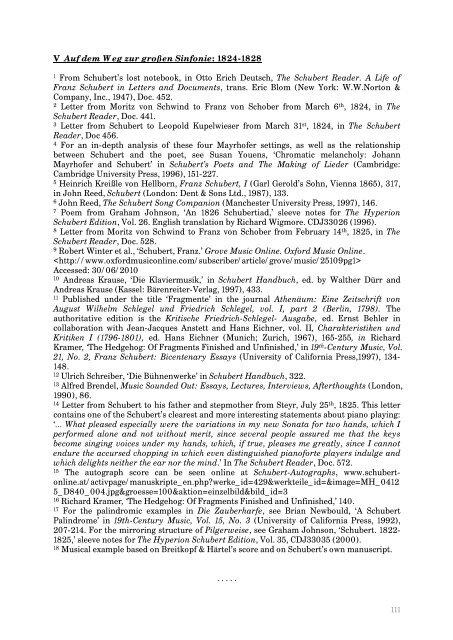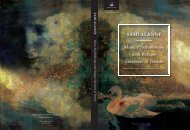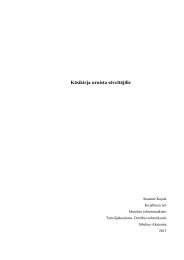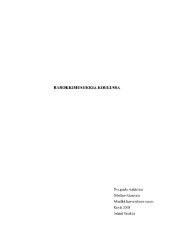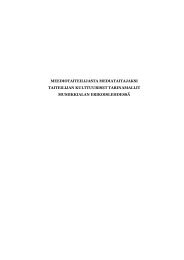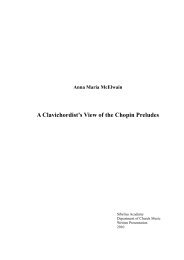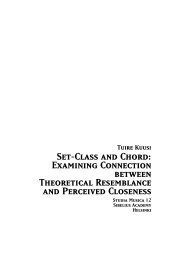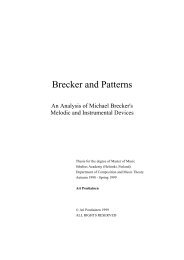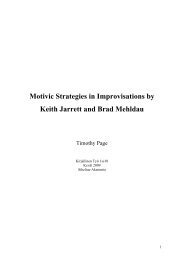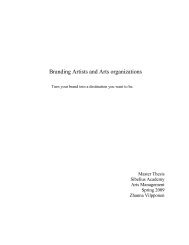The Unfinished Piano Sonatas of Franz Schubert Javier ... - Ethesis
The Unfinished Piano Sonatas of Franz Schubert Javier ... - Ethesis
The Unfinished Piano Sonatas of Franz Schubert Javier ... - Ethesis
Create successful ePaper yourself
Turn your PDF publications into a flip-book with our unique Google optimized e-Paper software.
V Auf dem Weg zur großen Sinfonie: 1824-1828<br />
1 From <strong>Schubert</strong>’s lost notebook, in Otto Erich Deutsch, <strong>The</strong> <strong>Schubert</strong> Reader. A Life <strong>of</strong><br />
<strong>Franz</strong> <strong>Schubert</strong> in Letters and Documents, trans. Eric Blom (New York: W.W.Norton &<br />
Company, Inc., 1947), Doc. 452.<br />
2 Letter from Moritz von Schwind to <strong>Franz</strong> von Schober from March 6 th , 1824, in <strong>The</strong><br />
<strong>Schubert</strong> Reader, Doc. 441.<br />
3 Letter from <strong>Schubert</strong> to Leopold Kupelwieser from March 31 st , 1824, in <strong>The</strong> <strong>Schubert</strong><br />
Reader, Doc 456.<br />
4 For an in-depth analysis <strong>of</strong> these four Mayrh<strong>of</strong>er settings, as well as the relationship<br />
between <strong>Schubert</strong> and the poet, see Susan Youens, ‘Chromatic melancholy: Johann<br />
Mayrh<strong>of</strong>er and <strong>Schubert</strong>’ in <strong>Schubert</strong>’s Poets and <strong>The</strong> Making <strong>of</strong> Lieder (Cambridge:<br />
Cambridge University Press, 1996), 151-227.<br />
5 Heinrich Kreißle von Hellborn, <strong>Franz</strong> <strong>Schubert</strong>, I (Garl Gerold’s Sohn, Vienna 1865), 317,<br />
in John Reed, <strong>Schubert</strong> (London: Dent & Sons Ltd., 1987), 133.<br />
6 John Reed, <strong>The</strong> <strong>Schubert</strong> Song Companion (Manchester University Press, 1997), 146.<br />
7 Poem from Graham Johnson, ‘An 1826 <strong>Schubert</strong>iad,’ sleeve notes for <strong>The</strong> Hyperion<br />
<strong>Schubert</strong> Edition, Vol. 26. English translation by Richard Wigmore. CDJ33026 (1996).<br />
8 Letter from Moritz von Schwind to <strong>Franz</strong> von Schober from February 14 th , 1825, in <strong>The</strong><br />
<strong>Schubert</strong> Reader, Doc. 528.<br />
9 Robert Winter et al., ‘<strong>Schubert</strong>, <strong>Franz</strong>.’ Grove Music Online. Oxford Music Online.<br />
<br />
Accessed: 30/06/2010<br />
10 Andreas Krause, ‘Die Klaviermusik,’ in <strong>Schubert</strong> Handbuch, ed. by Walther Dürr and<br />
Andreas Krause (Kassel: Bärenreiter-Verlag, 1997), 433.<br />
11 Published under the title ‘Fragmente’ in the journal Athenäum: Eine Zeitschrift von<br />
August Wilhelm Schlegel und Friedrich Schlegel, vol. I, part 2 (Berlin, 1798). <strong>The</strong><br />
authoritative edition is the Kritische Friedrich-Schlegel- Ausgabe, ed. Ernst Behler in<br />
collaboration with Jean-Jacques Anstett and Hans Eichner, vol. II, Charakteristiken und<br />
Kritiken I (1796-1801), ed. Hans Eichner (Munich; Zurich, 1967), 165-255, in Richard<br />
Kramer, ‘<strong>The</strong> Hedgehog: Of Fragments Finished and <strong>Unfinished</strong>,’ in 19 th -Century Music, Vol.<br />
21, No. 2, <strong>Franz</strong> <strong>Schubert</strong>: Bicentenary Essays (University <strong>of</strong> California Press,1997), 134-<br />
148.<br />
12 Ulrich Schreiber, ‘Die Bühnenwerke’ in <strong>Schubert</strong> Handbuch, 322.<br />
13 Alfred Brendel, Music Sounded Out: Essays, Lectures, Interviews, Afterthoughts (London,<br />
1990), 86.<br />
14 Letter from <strong>Schubert</strong> to his father and stepmother from Steyr, July 25 th , 1825. This letter<br />
contains one <strong>of</strong> the <strong>Schubert</strong>’s clearest and more interesting statements about piano playing:<br />
‘… What pleased especially were the variations in my new Sonata for two hands, which I<br />
performed alone and not without merit, since several people assured me that the keys<br />
become singing voices under my hands, which, if true, pleases me greatly, since I cannot<br />
endure the accursed chopping in which even distinguished pian<strong>of</strong>orte players indulge and<br />
which delights neither the ear nor the mind.’ In <strong>The</strong> <strong>Schubert</strong> Reader, Doc. 572.<br />
15 <strong>The</strong> autograph score can be seen online at <strong>Schubert</strong>-Autographs, www.schubertonline.at/activpage/manuskripte_en.php?werke_id=429&werkteile_id=&image=MH_0412<br />
5_D840_004.jpg&groesse=100&aktion=einzelbild&bild_id=3<br />
16 Richard Kramer, ‘<strong>The</strong> Hedgehog: Of Fragments Finished and <strong>Unfinished</strong>,’ 140.<br />
17 For the palindromic examples in Die Zauberharfe, see Brian Newbould, ‘A <strong>Schubert</strong><br />
Palindrome’ in 19th-Century Music, Vol. 15, No. 3 (University <strong>of</strong> California Press, 1992),<br />
207-214. For the mirroring structure <strong>of</strong> Pilgerweise, see Graham Johnson, ‘<strong>Schubert</strong>. 1822-<br />
1825,’ sleeve notes for <strong>The</strong> Hyperion <strong>Schubert</strong> Edition, Vol. 35, CDJ33035 (2000).<br />
18 Musical example based on Breitkopf & Härtel’s score and on <strong>Schubert</strong>’s own manuscript.<br />
. . . . .<br />
111


